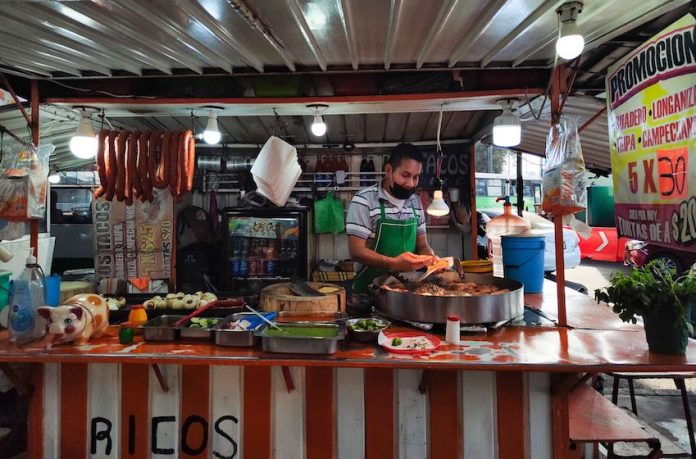The Bank of Mexico’s benchmark interest rate has finally come down, but inflation moved in the opposite direction in the first half of March.
A day after the central bank announced a 25-basis-point cut to what was a record-high 11.25% interest rate, the national statistics agency INEGI published data that showed that annual headline inflation ticked up to 4.48% in the first 15 days of March from 4.40% in February.

The annual core inflation rate, which excludes volatile food and energy prices, also increased, reaching 4.69% from 4.64% in February.
Both the headline and core rates exceeded the expectations of analysts surveyed by Bloomberg. The increase in inflation in the first half of March came after consumer prices declined in February following a three-month period in which the headline rate was on the rise.
In a post to the X social media platform, Moody Analytic’s Latin America director Alfredo Coutiño said that the latest inflation data sends a “message and warning” to the Bank of Mexico a day after it announced its first interest rate cut in more than three years.
In another post that could serve as a warning to the general population, he noted that a spike in services inflation in the first half of March indicated that prices for “tacos, tortas [and] enchiladas” have risen once again.
INEGI data shows that services were 5.57% more expensive in the first half of March than a year earlier, while prices for processed food, beverages and tobacco rose 5.08%.
Fruit and vegetables were 11.74% more expensive compared to the first half of March 2023, non-food goods were 2.62% dearer and energy prices including those for gasoline and electricity were up 3.12%.
The only category in which prices declined on an annual basis was meat, which was 0.83% cheaper.
INEGI also published inflation data for some individual products and services, including air travel, which was just under 36% more expensive in the first half of March than it was in the second half of February. The cost of holiday packages also increased by double digits in the lead-up to the Semana Santa (Holy Week) break, rising just over 10% compared to the second half of last month.
In better news, prices for nopales, onions and green beans all declined by 12% or more in the first half of March. While fruit and vegetable prices were up over 11% compared to a year earlier, those products were 1.29% cheaper in the first half of the month compared to the second half of February.
In a monetary policy statement published on Thursday, the Bank of Mexico predicted that inflation would fall to 3.6% in the final quarter of 2024. Such a rate would be within the central bank’s target range of 3% +/- one percentage point.
The bank anticipates inflation will fall to 3.2% in the first quarter of 2025 and 3.1% in the second before remaining at that level in the third and fourth quarters of next year.
With reports from El Financiero and El Economista
